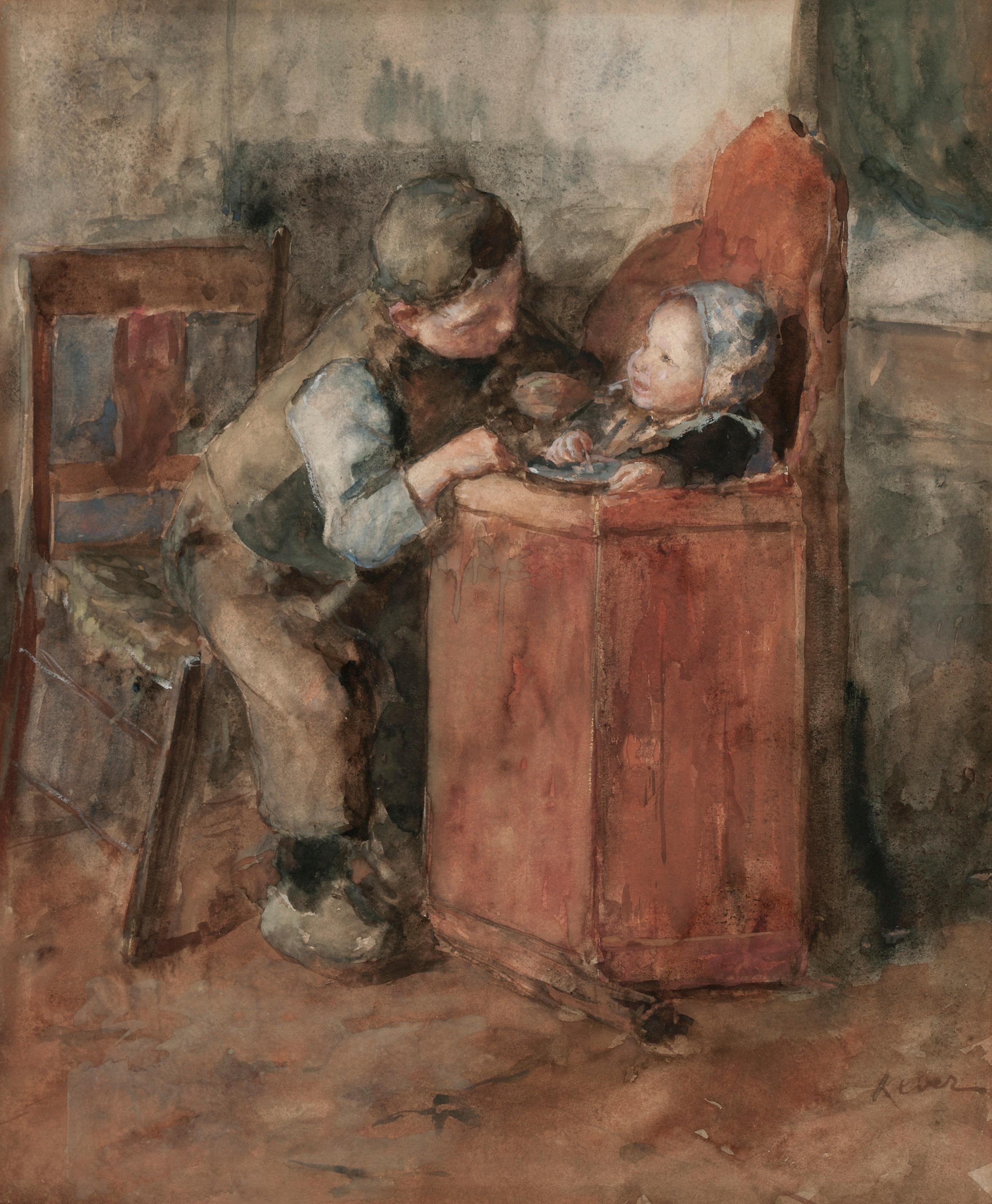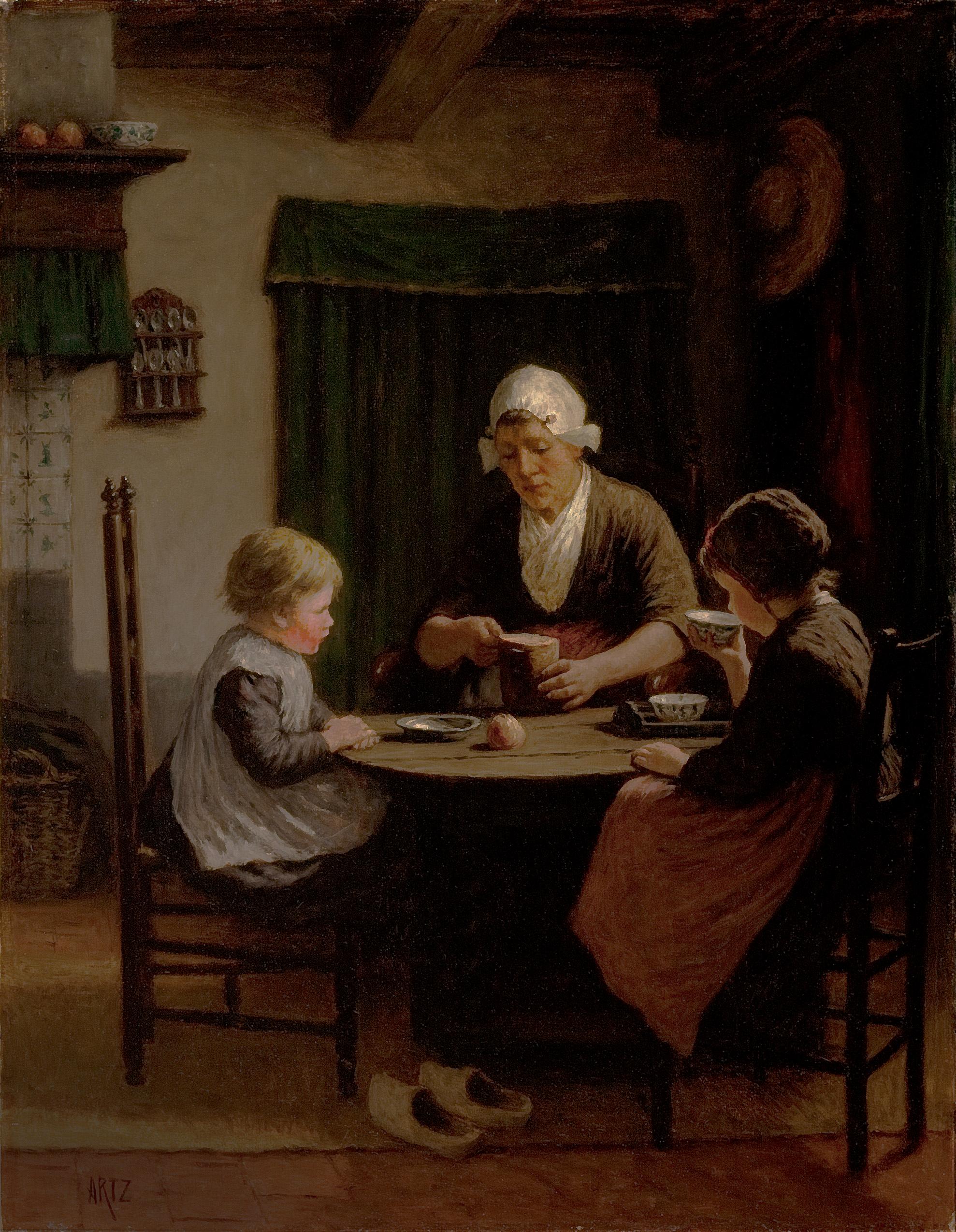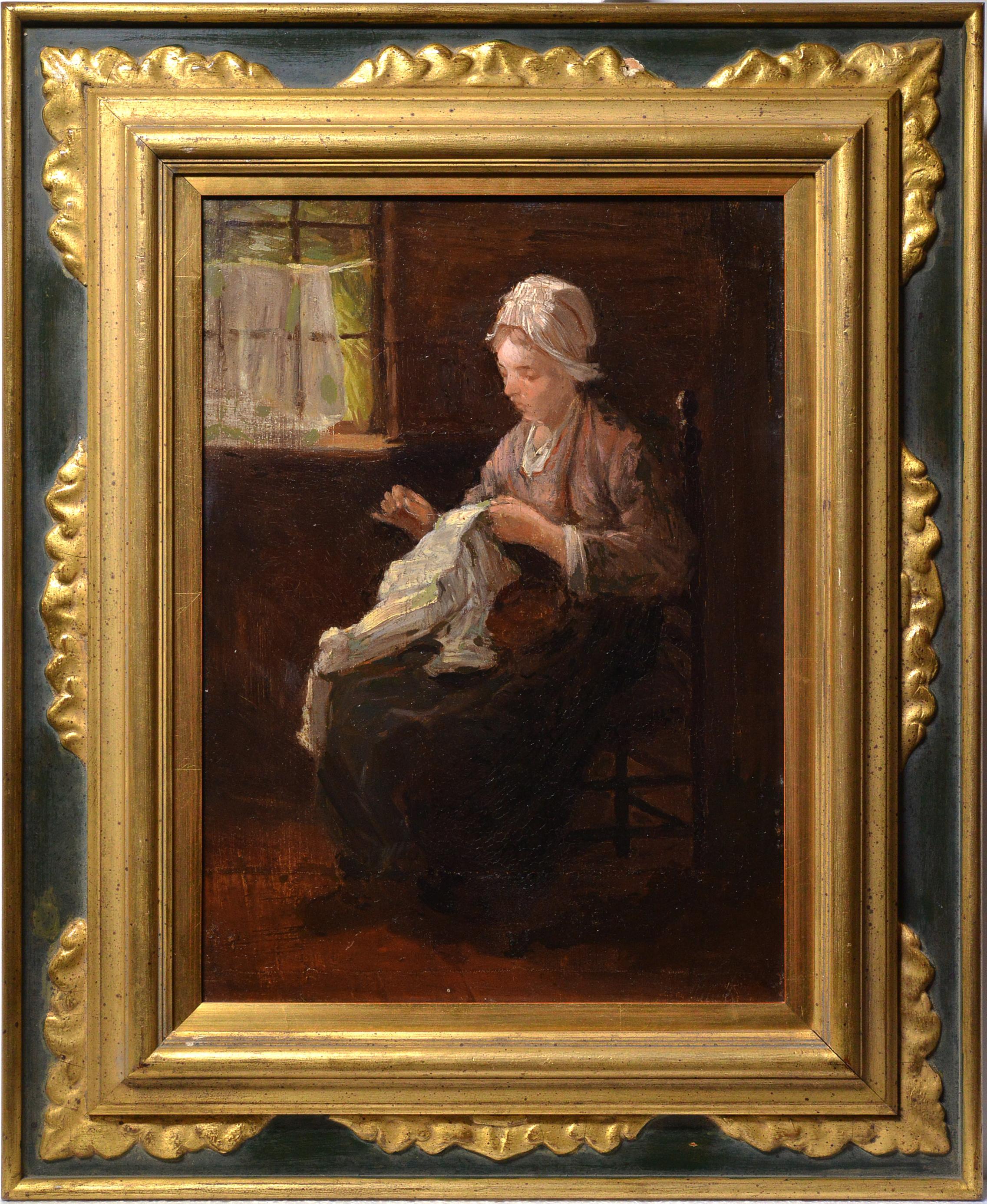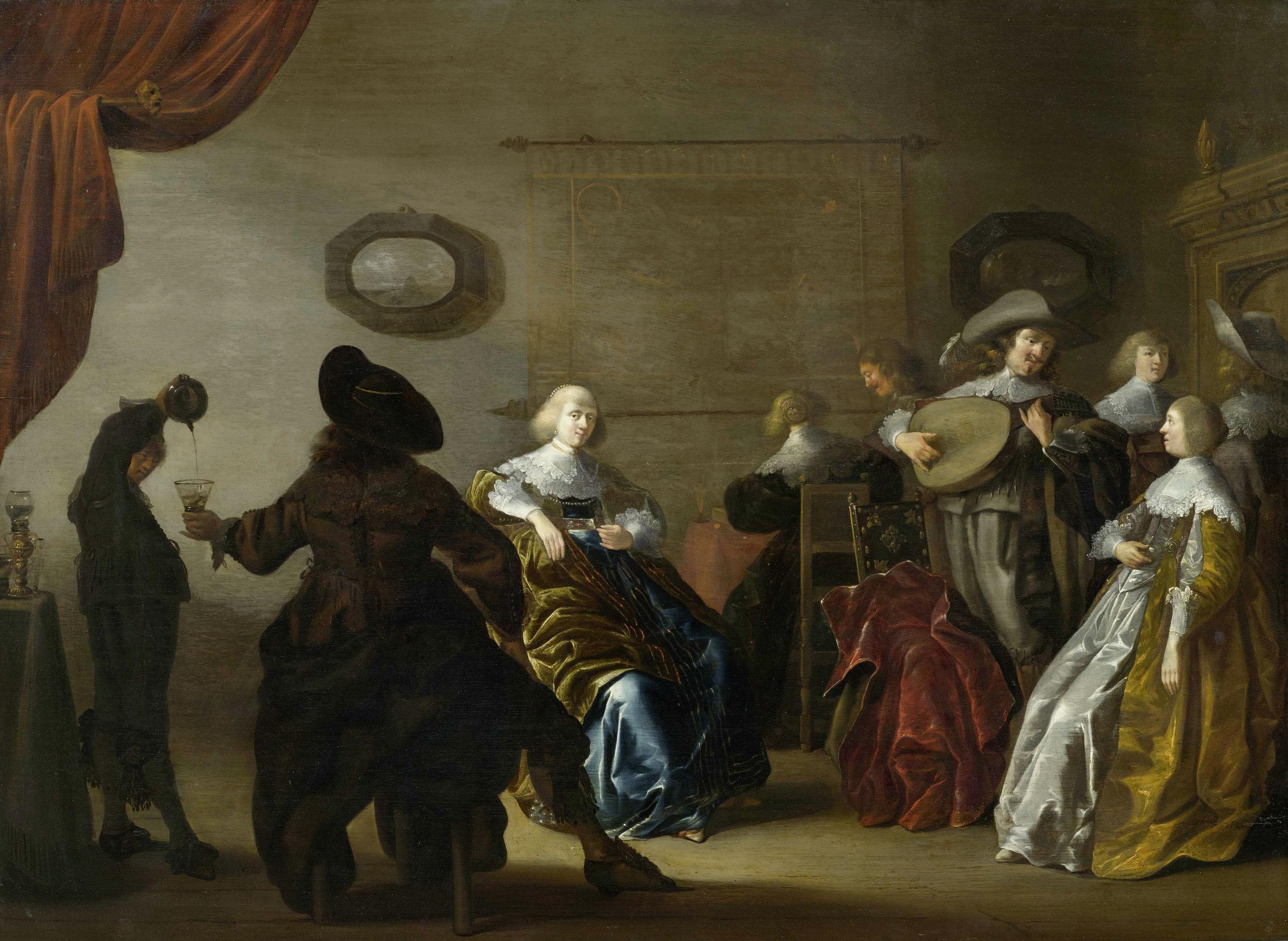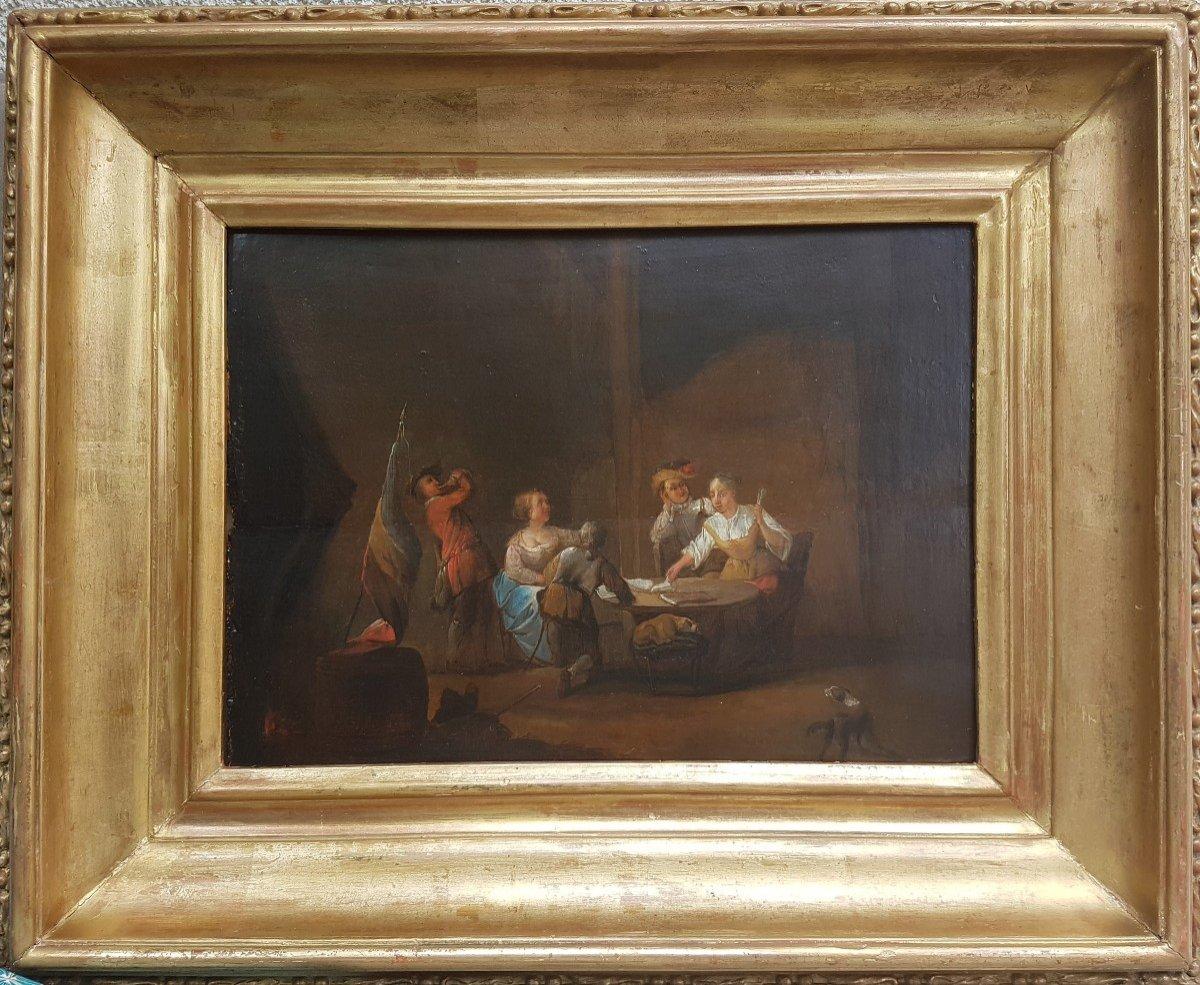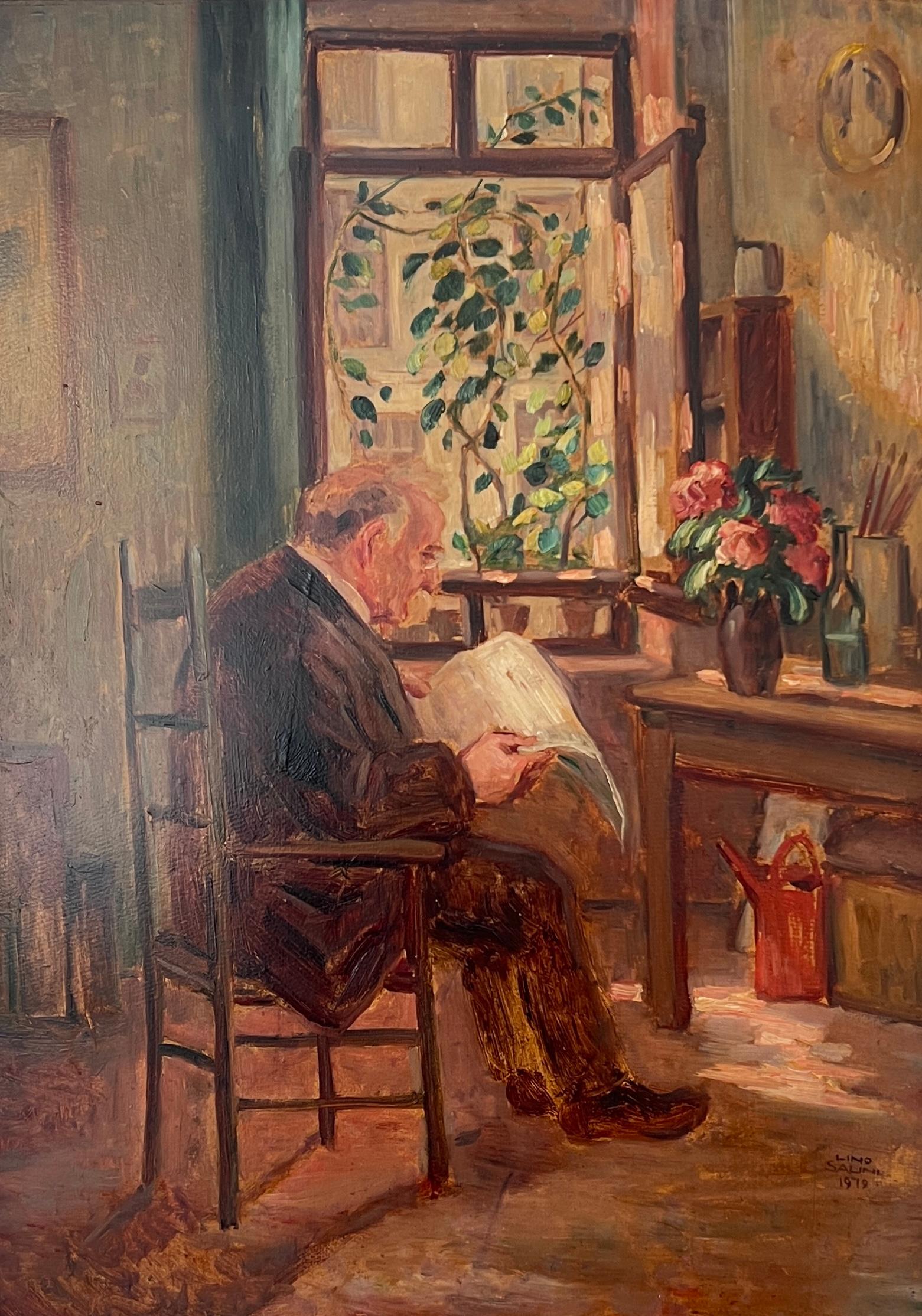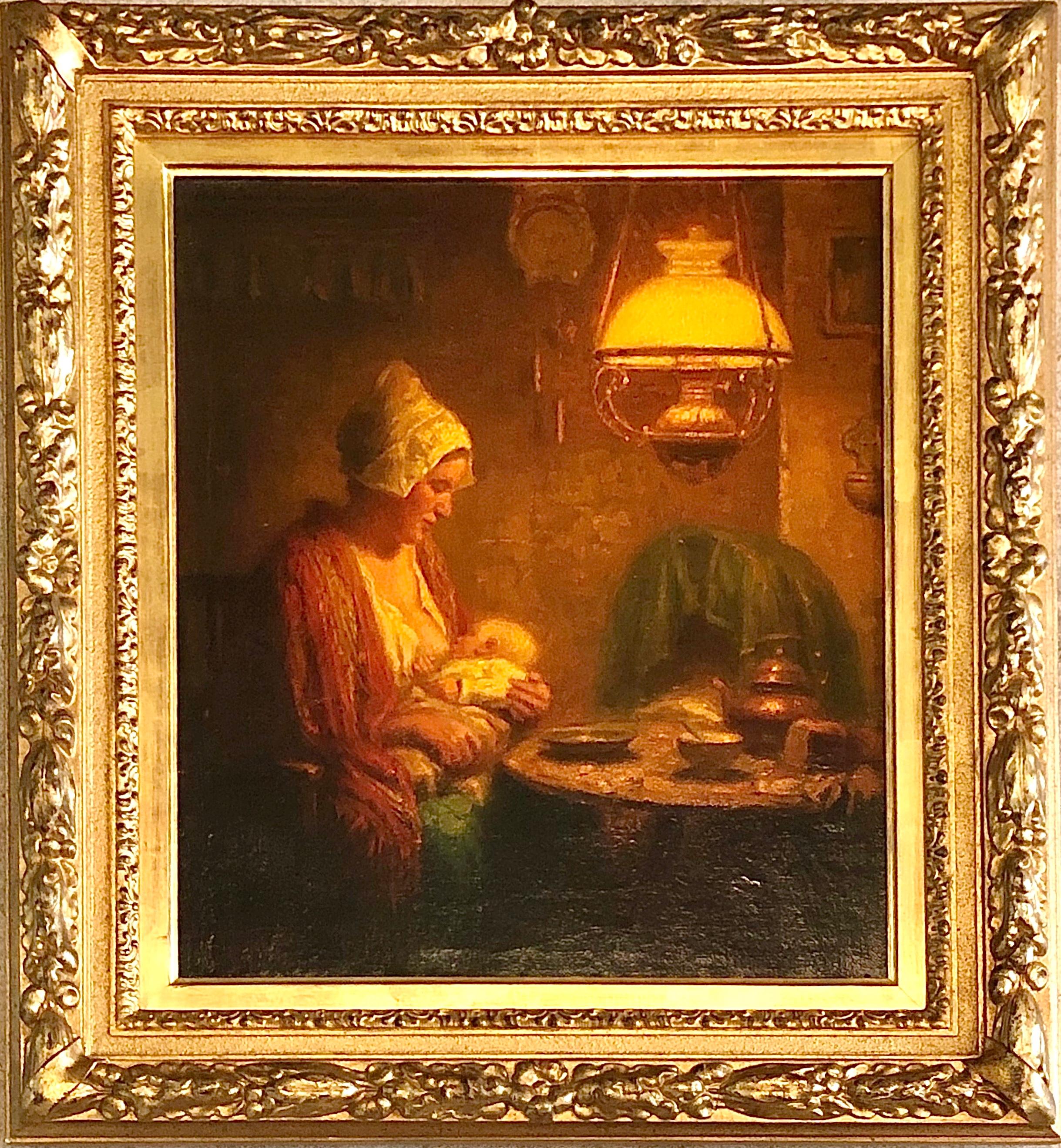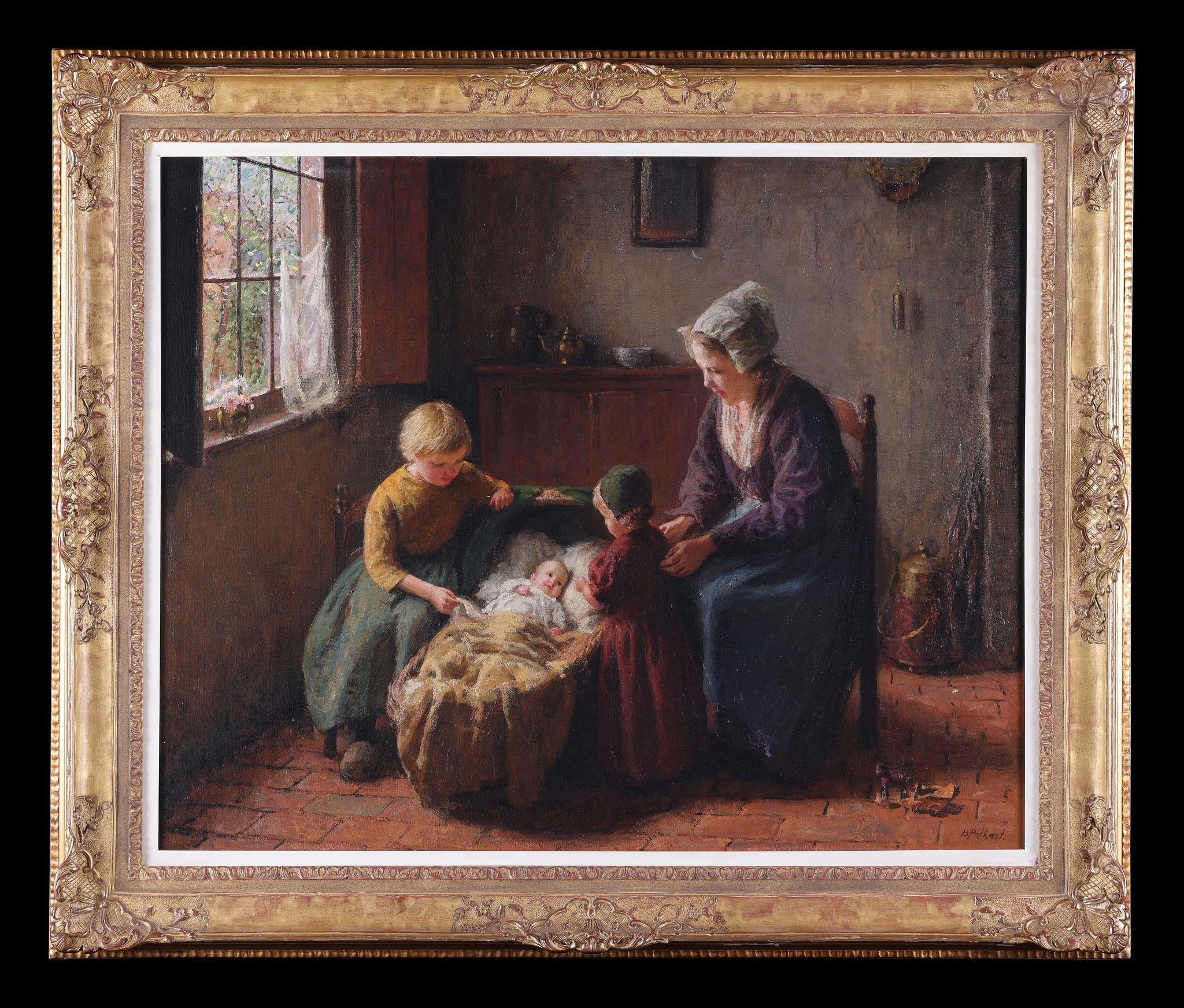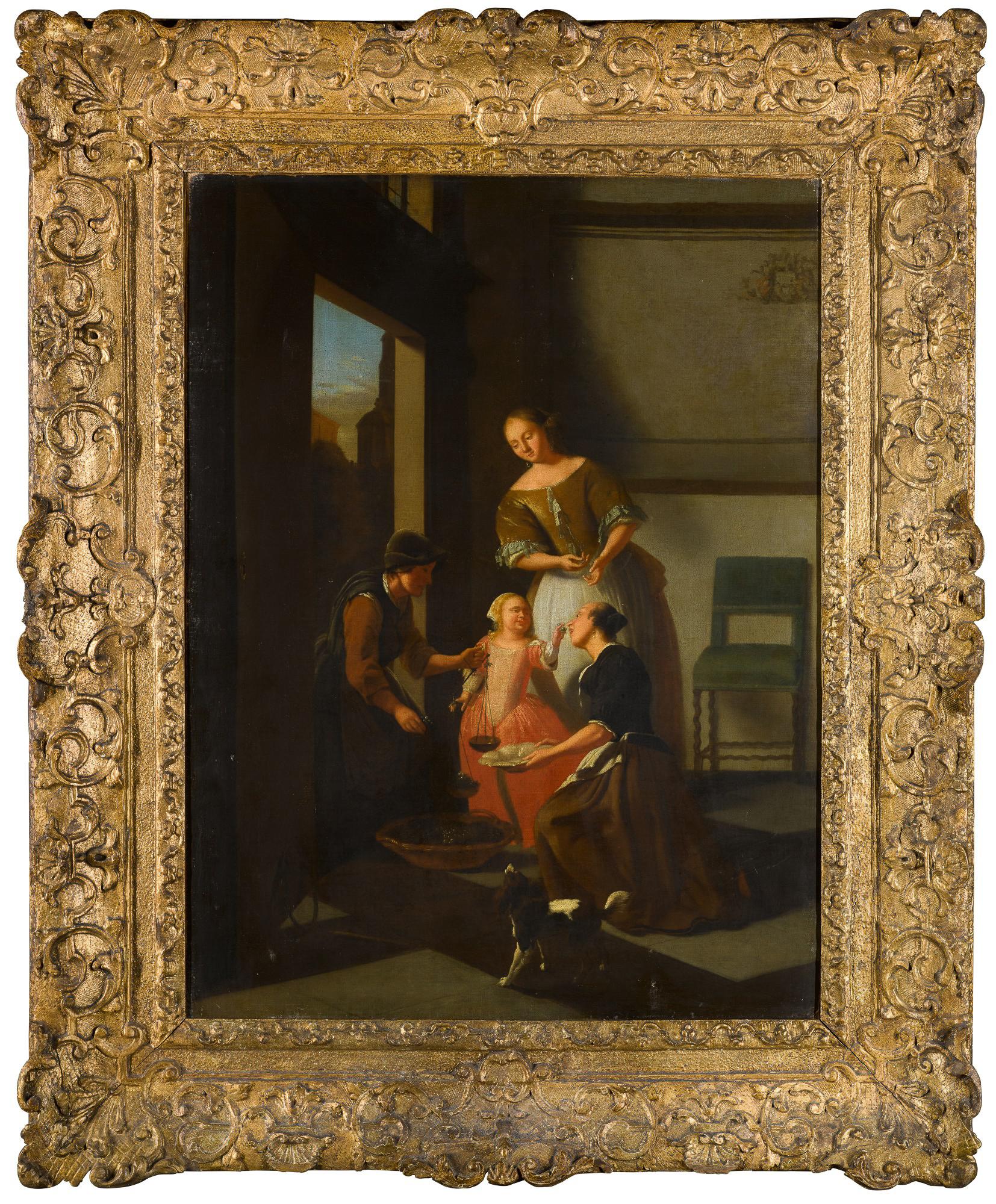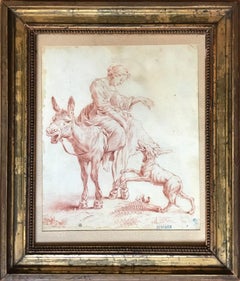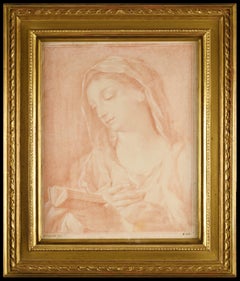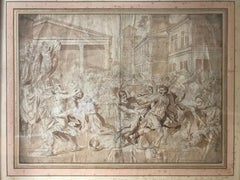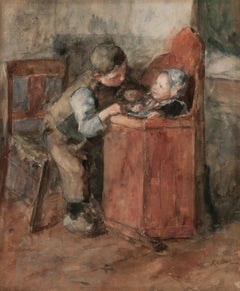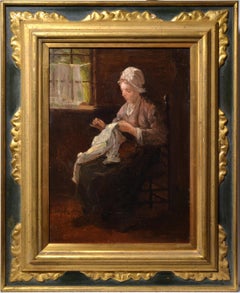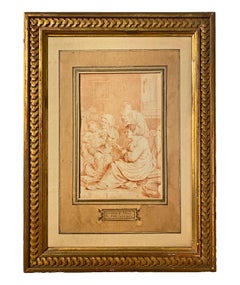
Peasant Family, Cornelis Bega. Dutch Golden age painter and engraver.
View Similar Items
Want more images or videos?
Request additional images or videos from the seller
1 of 7
Cornelis BegaPeasant Family, Cornelis Bega. Dutch Golden age painter and engraver.
About the Item
- Creator:Cornelis Bega (1631 - 1664, Dutch)
- Dimensions:Height: 8.67 in (22 cm)Width: 6.3 in (16 cm)Depth: 0.4 in (1 cm)
- Medium:
- Movement & Style:
- Period:
- Condition:
- Gallery Location:Brooklyn, NY
- Reference Number:1stDibs: LU159928526942
About the Seller
5.0
Vetted Seller
These experienced sellers undergo a comprehensive evaluation by our team of in-house experts.
Established in 2007
1stDibs seller since 2021
32 sales on 1stDibs
More From This SellerView All
- Sanguine drawing "Shepherdess on a Donkey" by Nicolaes BerchemBy Nicolaes BerchemLocated in Brooklyn, NYProvenance: Mercedes von Dietrichtein, Buenos Aires. Alexander von Dietrichstein. By descendants Morritz von Diestrichstein. Nicolaes Pieterszoon Berchem (1 October 1620 – 18 February 1683) was a highly esteemed and prolific Dutch Golden Age painter of pastoral landscapes, populated with mythological or biblical figures, but also of a number of allegories and genre pieces. He was a member of the second generation of "Dutch Italianate landscape" painters. These were artists who travelled to Italy, or aspired to, in order to soak up the romanticism of the country, bringing home sketchbooks full of drawings of classical ruins and pastoral imagery. His paintings, of which he produced an immense number, (Hofstede de Groot claimed around 850, although many are misattributed), were in great demand, as were his 80 etchings and 500 drawings. His landscapes, painted in the Italian style of idealized rural scenes, with hills, mountains, cliffs and trees in a golden dawn...Category
17th Century Dutch School Figurative Drawings and Watercolors
MaterialsPaper, Chalk
$7,600 Sale Price39% OffFree Shipping - Reading Madonna drawing. Red chalk on paper.By Francesco FernandiLocated in Brooklyn, NYInscribed: front, brown ink, bottom left, F. Imperiali pinx…; bottom right, R. Rol..(?). Back, brown ink, top left, Roma, Gune(?) 1742 / F. Impeririali ping…;[illegible] R. deline..(...Category
Mid-18th Century Figurative Drawings and Watercolors
MaterialsHandmade Paper, Chalk
- The Rape of the Sabine Woman, ink and pencil. After Nicolas PoussinBy (Circle of) Nicolas PoussinLocated in Brooklyn, NYPoussin’s subject is the abduction of the Sabine women. Historically, this subject was known as The Rape of the Sabines (rape being derived fro...Category
Early 17th Century Baroque Figurative Drawings and Watercolors
MaterialsInk, Paper, Pencil
$2,800 Sale Price20% OffFree Shipping - Personajes geométricosBy Mario CarrenoLocated in Brooklyn, NYAcquired from the Herminio Iglesias collection, Havana.Category
1940s Abstract Geometric Abstract Paintings
MaterialsCanvas, Gouache, Laid Paper
- Lamentation of Christ oil on paper laid on canvasBy Annibale CarracciLocated in Brooklyn, NYThe composition repeats that of a large altarpiece designed by Annibale Carracci for the church of San Francesco a Ripa, Rome (now in the Louvre, Par...Category
Early 17th Century Old Masters Figurative Paintings
MaterialsPaper, Canvas, Oil
- Phenomena for a king, abstract watercolor pouringBy Paul JenkinsLocated in Brooklyn, NYThe work is signed on both sides. It also bears a Galerie Karl Flinker label, since Jenkins has spent a great deal of time in France since the 1950s. Paul Jenkins was born on July 1...Category
1970s Abstract Abstract Paintings
MaterialsPaper, Watercolor
$11,200 Sale Price20% OffFree Shipping
You May Also Like
- Brotherly LoveLocated in New York, NYsigned in the lower right Kever watercolor on paper 19 3/16 x 17 1⁄8 inches (49.2 x 43.7 cm.) PROVENANCE Dr. Katherine Kromm Merritt, Stamford, Connecticut, until circa 1990, from whom acquired by Private Collection, Vinalhaven, Maine, until 2015 In the warm morning glow of a country kitchen, a young boy entertains his little sister seated in a high chair. In return her adoring glance speaks volumes. The dramatic angling of the baby’s high chair, whose design harks back to the seventeenth century, animates the scene. Through an economy of means and a limited palette of largely brown and orange, Jacob Simon Hendrik Kever captures the richness of the moment and its idyllic rusticity. Josef Israels was the first to encourage Kever to study painting. He began his training at the Koninklijke Academie voor Beeldende Kunsten, Amsterdam, in 1869, studying with Petrus Franciscus Greive until 1872. From 1874 - 1875 he attended the Rijksakademie van Beeldende Kunsten, also in Amsterdam. From 1878-1879 under the tutelage of Charles Verlat he was enrolled in the Koninklijke Acaemie voor Schone Kunsten in Antwerp. His subjects included portraits, cityscapes, landscapes, flowers, genre and interior scenes in watercolors, oils, and etchings. Throughout his career he worked in Blaricum, Nunspeet, the province of North Brabant and Eemnes. Although not technically considered a member of the Laren School he also lived there from 1877-1879 and again in 1905-1922. He further maintained an apartment in Amsterdam near the Oosterpark where he resided during the winter months. The area must have constituted somewhat of an artist’s community as his neighbors were Geo Poggenbeek, Nicolaas Bastert and later Willem Witsen...Category
Late 19th Century Dutch School Interior Paintings
MaterialsWatercolor
- At Grandmother’sLocated in New York, NYsigned in the lower left Artz oil on canvas 26 x 19 ⅝ inches (66 x 50 cm.) PROVENANCE D. Sala & Zonen, Leiden , prior to 1936 Private Collection, Florida, circa 1968 until the present time Much like their seventeenth century counterparts, a group of painters known as the Hague School in the 1870s came to embrace as their subject matter the native Dutch landscape and the everyday lives of its rural inhabitants, most notably the fisher folk of the coastal villages. Within ten years the Hague School artists’ works would prove so popular that incredibly a mania for all things Dutch would be felt throughout the world, and would dominate the art in Holland until well after the turn of the century. By embracing simple themes remarkable for their ordinariness, the Hague School succeeded in striking a chord with a public whose own placidity was constantly being rattled by the evolving modernity of the times. Conveyed through the employment of subtle tones, hazy skies and subjects of happenstance their mix of nostalgia and realism enchanted viewers. The Hague became the center of the movement because it was semi-rural surrounded by meadows, polders, waterways, dunes and woods, and nearby Scheveningen provided a wealth of material for artists seeking to paint the shore and its fishing community. Jozef Isräels was considered the dean of the Hague School and David Adolphe Constant Artz his most important follower. Artz began his training in 1855 at the Amsterdam Academie under Louis Roijer and Johannes Egenberger, and would remain in Amsterdam until 1864. During this period, he would be influenced by August Allebé but more importantly a lifelong friendship with Jozef Israëls formed. In 1859 they traveled together to Zandvoort. He would also be the first of the Hague School artists to follow Isräels’ lead of working on the beach at Scheveningen. In 1859 Artz publically exhibited for the first time, taking part in the Tentoonstelling von Levende Meesters (Exhibition of Living Masters). In 1864 he left Amsterdam to live in Zweeloo, Drenthe for a year. From 1866 until 1874 he shared a studio with Jacob Maris and Frederick Hendrik Kaemmerer. He was one of the first of the Hague School artists to work in Paris (Jacob Maris having preceded him by one year) enabled by his patron and benefactor Johannes Kneppelhout. Artz created quite a commotion upon his arrival by including in his baggage a large collection of Scheveningen peasant costumes. As previously in Holland, Artz during his sojourn in Paris continued to paint beach scenes and interior views that featured the fishing communities of the North Sea. During this period Artz became interested in Japanese prints which had recently become available in Paris, and painted a few genre scenes of interiors with Japanese décor and subjects. While based in Paris he also traveled to Scotland from May-June 1869, Germany in November of that year, England in 1870 and Italy in January, 1872. By 1874 he returned to the Netherlands to live permanently in The Hague. Artz in his own time was held in high esteem by the public as well as his fellow artists. He was awarded gold medals at exhibitions in Munich and Vienna, as well as a Diploma and Medal of Honor in Dresden. In 1879 he was made Knight of the Oaken Crown of Luxembourg and in 1889 also became a Knight of the Order of St. Michael of Bavaria. In 1880 he received an Honorable Mention at the Salon in Paris and won a gold medal in 1883 at the International and Colonial Exhibition, Amsterdam. In Paris he was a member of the Société Nationale des Beaux Arts and a Chevalier of the Legion of Honor by 1889. He also served as Vice President of the International Jury of Award at the 1889 Exposition Universelle, Paris. In 1893 four works by Artz were chosen to be included in the World’s Columbian Exposition, Chicago. An American reviewer wrote of this show “The works of giants like Rembrandt, Van der Neer, Ruysdael, Holbein and Franz Hals are almost equaled now by masters like Israels, Mesdag, Bosboom, Maris, Mauve and Artz”. Artz’s entries A Girl Knitting, The Pet Lamb, Idle Hours on the Dunes and Girl Sleeping on the Dunes were listed under the category of “Immortal Works”. His works formed part of museum collections of Amsterdam (Rijksmuseum and Municipal Museum); Cambridge, England; Chicago; Dordrecht; Glasgow; Haarlem; The Hague (Gemeentemuseum and Mesdag Museum); Leewarden; Montreal; New York (Brooklyn and the Metropolitan Museum); Oxford; Rotterdam; St. Louis; Tulsa and Zandvoort. Much enamored with the picturesque dwellings of the rural population, a favorite subject of the Hague School was the depiction of a family group gathered around a table sharing a simple meal. Ronald de Leeuw in his introduction for The Hague School Book remarked that the group “derived poetry from a view of the kitchen”. Artz excelled at this type of interior scene in which every detail has been carefully recorded in emulation of his seventeenth century predecessors. Vincent van Gogh, an admirer of the Hague School in general and Artz in particular, wrote to his brother Theo in a letter dated Etten, Friday, August 26, 1881 about an exhibition in The Hague he had just visited in which he described a drawing by Artz of an “old man and woman eating porridge, very important, very good and serious.” There is a large version of At Grandmother’s (131.5 x 91.5 cm.) in the Rijksmuseum, Amsterdam. It was painted in 1883 and shown in an exhibition in The Hague in 1884 where it was purchased by the museum. This undoubtedly must have sparked interest in the composition and created a demand for the image to be replicated as several versions of the composition in varying sizes are recorded, and Artz was known for executing repetitions of his own works. Regarded as one of the highlights of the collection in the Philbrook Museum of Art in Tulsa, Oklahoma is another version by Artz of At Grandmother’s. The iconic nature of the image must have appealed to contemporaries as the perfect summation of the mix of idealism and realism that characterized these artists and their times. In a cottage under a wooden beamed ceiling a grandmother with her two granddaughters clothed in the traditional garb of Katwijk (where the artist spent his summers and maintained a cottage in the dunes) sit on wooden chairs around a gate-leg table in a kitchen sharing a simple meal of bread and an apple. The grandmother carefully slices a piece of bread while the younger girl looks on expectantly. Her sister sips milk from a small delftware bowl watching...Category
Mid-19th Century Dutch School Interior Paintings
MaterialsOil
- Dutch interior scene Peasant girl sewing 19th century Oil paintingBy Jozef IsraëlsLocated in Stockholm, SESigned bottom right: Jozef Israëls (1824 – 1911). Painting was certified by Pierre Noelmans of Reveil Galerie in Maastricht in early 1970s. Jozef Israëls, was best-known second hal...Category
Late 19th Century Dutch School Portrait Paintings
MaterialsWood, Oil
- Interior with gathering of musiciansLocated in Tallinn, EE(1601, Delft – 1673, Amsterdam) Interior with gathering of musicians. Circa 1635. Oil on panel. 59.3 x 82 cm. Provenance Jules Porgès Collection, Paris , 1911. Fine Art Gallery...Category
1630s Dutch School Interior Paintings
MaterialsOil, Panel
Price Upon Request - Painting flemish school 18th century oil on panel wood - Interior tavernLocated in PARIS, FRNordic school of the 18th century Oil on panel on wood 27 cm x 33 cm (42 x 51 cm with the frame) Old frame in carved and gilded wood Good condition even ...Category
18th Century Dutch School Interior Paintings
MaterialsOil
- Character reading the newspaperLocated in Genève, GEWork on cardboard Golden wooden frame 79 x 59 x 2.5 cmCategory
1910s Dutch School Interior Paintings
MaterialsOil
Recently Viewed
View AllMore Ways To Browse
Antique Age
Antique Aged
Age Antique
Interior Classic
Antique Style Interior
Golden Age
Antique Small Painting
Small Antique Paintings
Small Antique Painting
Dutch Painter
Classical Interior
Antique Dutch Painting
Antique Dutch Paintings
Dior Engraved
Early Dutch Painting
Dutch Style Painting
Saint Family
Golden Age Painting
